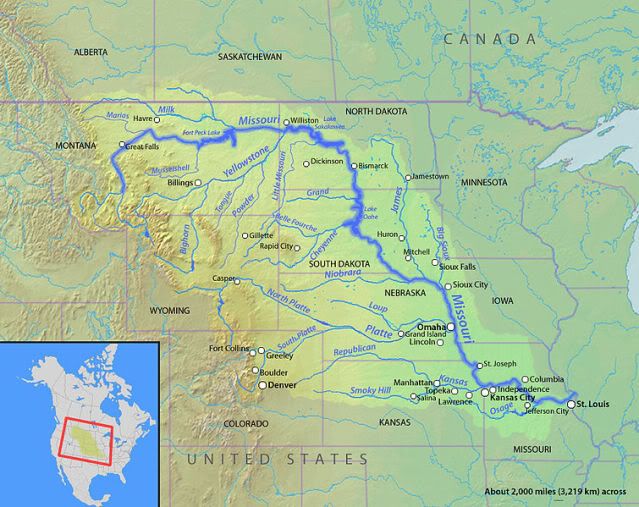That’s the Garrison Dam in North Dakota. It is one of six dams that comprise the principle flood control of the Missouri river and part of the protection for the Ft. Calhoun Nuclear Power Plant I have written about here Would a little American nuclear emergency make you look up? We're having one and here
The Missouri River is in flood stage. The Missouri River is in 100 year flood stage and according to one source I cite in the diary if we roll snake eyes on our luck not only is a nuclear power plant criticized for it’s lack of flood preparedness in danger, but St. Louis may end up to their armpits in water.
...Barring any other issues, the gates will stay open and all 28 of them should be in use by next week, raised slightly higher to increase the flow rate.
The gates will contribute about 65,000 cfs to the full release of 150,000 cfs scheduled to start sometime next week.
Meantime, the corps expects the lake behind the dam will continue to rise to 1,856 feet elevation. The new record elevation will occur because the top of the spillway is higher when the gates go up and because of the bulge of water expected from mountain snowmelt. ...
Bismark Tribune

As alarming as that might be the true issue may not be with the Garrison Dam, but the Fort Peck Dam the first dam in the system. Here is a scenario taken from Bernard Shanks a guest commentator from the St. Louis Today.com website.
The Fort Peck Dam is built with a flawed design that has suffered a well-known fate for this type of dam — liquefaction — in which saturated soil loses its stability. Hydraulic-fill dams are prone to almost instant collapse from stress or earthquakes. California required all hydraulic-fill dams be torn out or rebuilt — and no other large dams have been built this way since.
At three miles wide, Fort Peck Dam last opened its floodgates 36 years ago. By the end of the first week in June, the U.S. Army Corps of Engineers will be releasing a record spill of water. The corps recently answered the question of possible failure with a statement the dam is "absolutely safe." It may be the largest at-risk dam in the nation.
Snip
Here is a likely scenario: Garrison, Oahe and three other downstream earthen dams would have to catch and hold a massive amount of water, an area covering nearly 250 square miles 100 feet deep. But earthen dams, when overtopped with floodwater, do not stand. They break and erode away, usually within an hour. All are full.
There is a possibility a failure of Fort Peck Dam could lead to a domino-like collapse of all five downstream dams. It probably would wreck every bridge, highway, pipeline and power line and split the heartland of the nation, leaving a gap 1,500 miles wide. Countless sewage treatment plants, toxic waste sites and even Superfund sites would be flushed downstream. The death toll and blow to our economy would be ghastly
St. Louis Today link to an opinion piece.
No comments:
Post a Comment